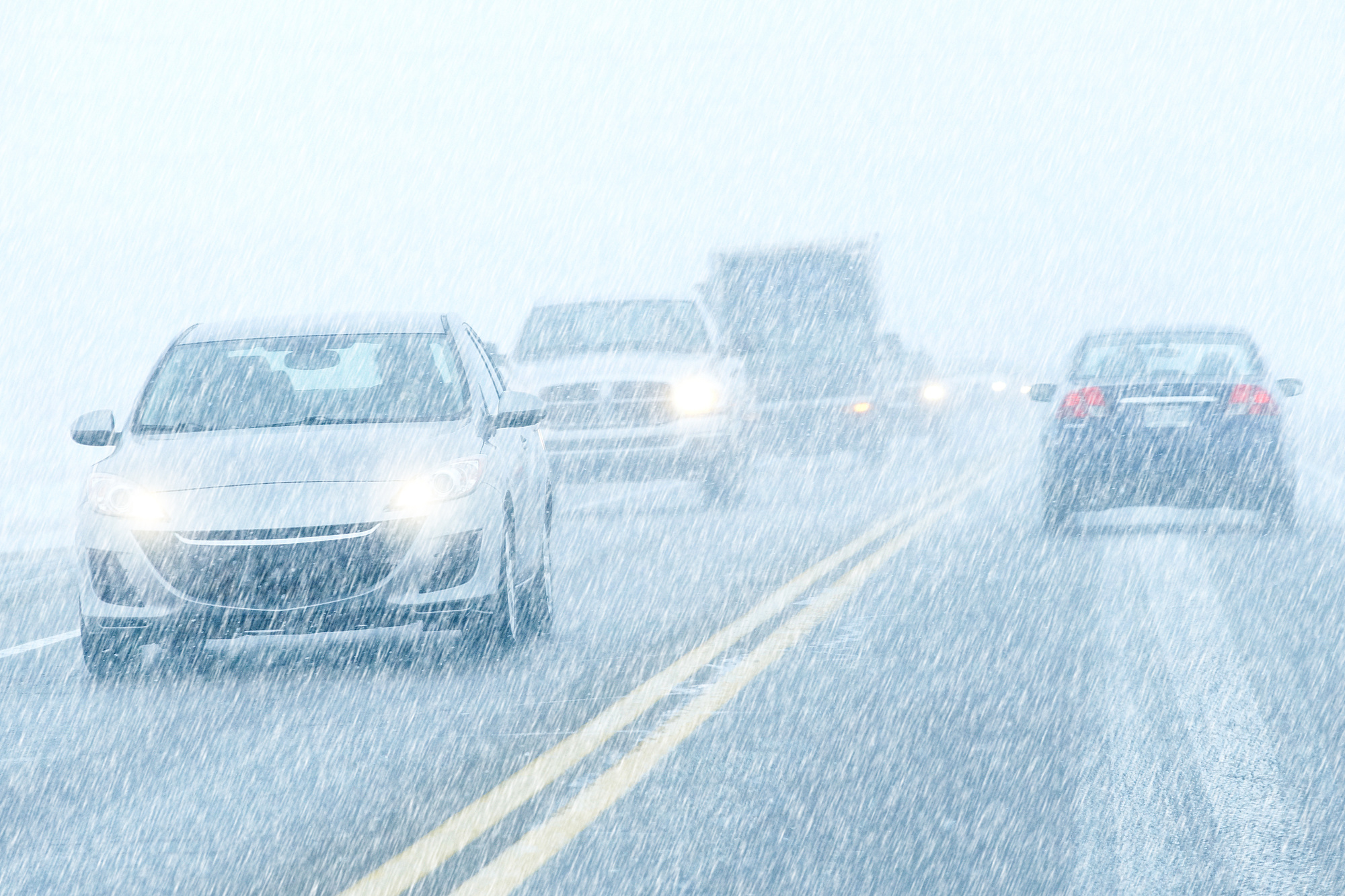
When it comes to bad weather, our vehicles can take a beating from storms and extreme temperatures. Hail alone resulted in over 700,000 people filing auto damage claims over a three-year period.
While there’s nothing we can do to change the weather, there are precautions drivers can take to prevent or minimize car damage from a storm or severe conditions. Here are the most common weather conditions that can cause problems and tips on how to safeguard your vehicle from each one.
Extreme Heat
When the thermometer soars, the sun’s punishing rays don’t just make the inside of your vehicle unbearably hot. They can also dry out seating, leading to fading and cracking with repeated exposure. Your car’s paint can fade and oxidize over time if it’s always parked in the sun.
The best way to keep your car’s interior cooler and shielded from the sun is to park it in a garage or a shady area. Just take care that you’re not underneath pine trees, which can drip sap onto your vehicle, or trees where a lot of birds tend to congregate. Use your office’s parking garage if it has one.
If a garage or suitable shade isn’t available, use a windshield sunshade. These can make a noticeable difference to your car’s interior temperature and help preserve the seating.
Although car manufacturers have designed vehicles to perform at very hot temperatures, you’ll want to check your tire pressure, coolant level, and battery condition to make sure you don’t run into any problems driving. No one wants to be stuck on the side of the road on a very hot day.
Extreme Cold
The opposite temperature extreme can be just as punishing on your car. The most important thing you want to prevent is a dead battery as the cold can freeze the battery cells. Older car batteries are more susceptible to very cold weather and can deplete quickly.
A battery tender can help keep your car’s battery juiced up until the temperature starts to warm back up. If you don’t have access to an electrical outlet to plug in a battery tender, you can run your car every so often, for 15 minutes at a time, to help it survive the cold snap.
An aftermarket block or oil heater can help keep your car’s oil more viscous and your vehicle may start faster. Lubricate your car’s seams and keyholes with WD-40 oil or a deicer to prevent doors from freezing shut. Fill your car’s windshield fluid reservoir with a freeze-proof windshield cleaner so you’ll have clear windows during the colder months.
If you have a garage, use it. The temperature inside a garage will always be a little warmer than the temperature outside and can make a difference.
Thunderstorms and Hail Storms
Thunderstorms, hail storms, hurricanes, and tornados are all scary weather situations that can render a car undrivable. The most important thing when any of these conditions are in the forecast is to shelter your vehicle or keep it away from anything that can fall on or fly into it.
That means, again, bringing it inside a garage which is still the best way to shield it. If you’re out on the road and a hail storm or bad thunderstorm hits, look for a nearby gas station where you can park underneath it until the storm passes. You can also park next to a building out of the wind’s direction if possible.
Avoid parking underneath or near trees, which can drop a large branch onto your car. If you don’t have access to a garage, try a padded car cover. These aren’t completely effective depending upon the severity and size of the hailstones, but it can at least soften the impact.
You can also get creative and cover your car with anything that may cushion it from hail. People have used heavy blankets, pool floats, furniture pads, and even their vehicle’s floor mats to prevent the need for hail damage repair.
Protect your car from heavy rain by keeping it washed and waxed, and making sure any openings along the windows and doors are sealed.
If you don’t have a garage and heavy wind is in the forecast, secure or put away any outdoor furniture, toys, and other potential projectiles.
Snow and Ice
Snow and ice can scratch your car’s exterior. As washing and waxing your car during the warmer months helps create a barrier against moisture, you’ll want to continue this detailing treatment into the cold season as well.
Place a piece of cardboard or a large towel over your vehicle’s windshield to make it easier to remove snow and ice from this part of your car. Use snow tires during the winter so you’ll get a better grip on slippery roadways, and maintain the correct tire pressure. Cold weather can cause tire pressure to drop.
For Year-Round Protection
Consider getting a pop-up car tent that attaches to the car’s roof using suction. They are meant to be used year-round and can help deflect snow, ice, and hail away from the roof of your car. A car tent will also shield your vehicle from the sun’s rays in the summer.
Prevent Car Damage During Severe Weather
Preventing car damage when extreme weather hits is a matter of being proactive. One of the best ways to protect your car is to monitor the weather forecast so you know when disruptive weather is approaching. You can set an alert to go off on your phone or computer to warn you of damaging conditions.
If you’re concerned about something going wrong on the inside of your car, visit our Car Service and Repair section for how-tos and vehicle repair tips.